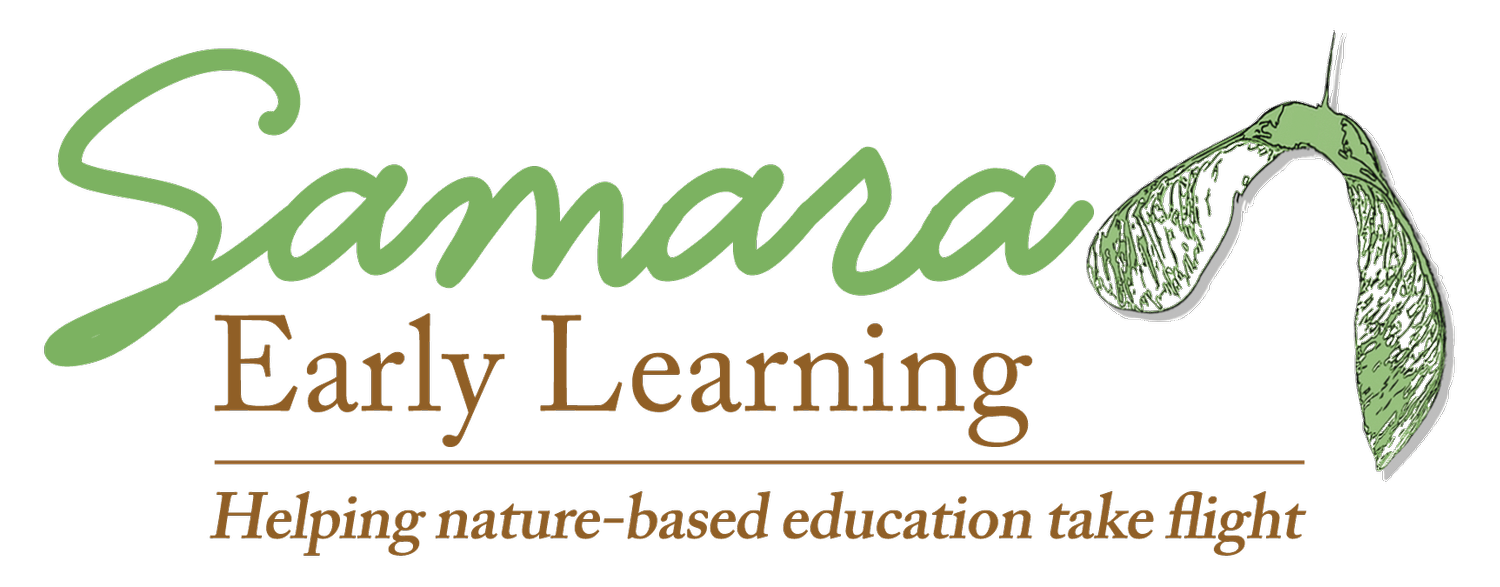Wonder walks & sit spots
This post originally appeared in Dr. Rachel A. Larimore’s weekly Samara newsletter on November 14, 2023. If you’re interested in receiving these emails, scroll to the bottom of this page to subscribe.
Mindfulness. It’s a term that seems to be growing in popularity, but what is it? And does it have a place in nature-based early childhood education?
Mindfulness is bringing awareness to what we’re doing, what we’re thinking, and what is happening around us and it absolutely has a place in nature-based early childhood education!
Simply being in nature has many benefits to our well-being, but bringing our awareness to the present moment in nature amplifies the benefits.
Last week Katie Pollock and Laura Morris of the University of Delaware Lab School joined us inside The Grove to share about the way mindfulness and nature-based education can work together. We discussed many ways we can bring mindfulness into our nature-based classrooms.
Two of those strategies are Wonder Walks and Sit Spots. And both can be done anywhere!
Wonder Walks
Wonder walks are a way to explore the world intentionally looking for things that bring us a sense of awe. These walks are generally slow with a focus on the journey rather than a particular destination. The goal is to allow our senses to take in the world around us and notice what excites us, what inspires us, what surprises us, and what questions emerge from those experiences.
Before or after a wonder walk the group could read the storybook “Wonder Walkers” to help children generate questions they have based on their exploration of the natural world. There is no right or wrong way to do a wonder walk!
Wonder walks encourage teachers and children to slow down, be in the present moment, and increase their awareness of the world around them.
Sit Spots
In its purest form a sit spot is a place in nature that you visit regularly and get to know over time. This is a place to sit still—alone, regularly, and quietly.
Sit spots can be a teacher practice without children. Sit spots can also be a group activity with younger children where the entire class is quiet and observing for one minute and then slowly increases the amount of time over the course of the year. Some programs, particularly at the elementary level, use sit spots as a core part of their outdoor routine. There are many possibilities!
A sit spot practice not only connects us with the natural world, it provides a place to retreat from the chaos of the world and renew your spirit. Whether you sit quietly for 1 minute or an hour, it is time to slow down and bring our awareness to the present moment. It gives us the mental space to notice our own thoughts as well as the natural world around us.
Wonder walks and sit spots are just two of many ways we can bring mindfulness and nature together in our classrooms. We can also…
→ pause in the Beyond to use your “deer ears” and listen to the sounds of nature for 30 seconds.
→ help children notice and name their feelings during problem solving
→ use a leaf with multiple lobes to help children calm their bodies by inhaling on one edge of the leaf and exhaling on the next.
In the increasingly chaotic and noisy world we have many opportunities in nature-based education to teach young children to be mindful as they move through the world.
Of course sit spots and wonder walks are just the tip of the iceberg when it comes to mindfulness.
And for more on sit spots & their role in nature-based education, check out Sit spot to rejuvenation!
Keep changing lives,
Rachel
Rachel A. Larimore, Ph.D., Chief Visionary of Samara Learning


